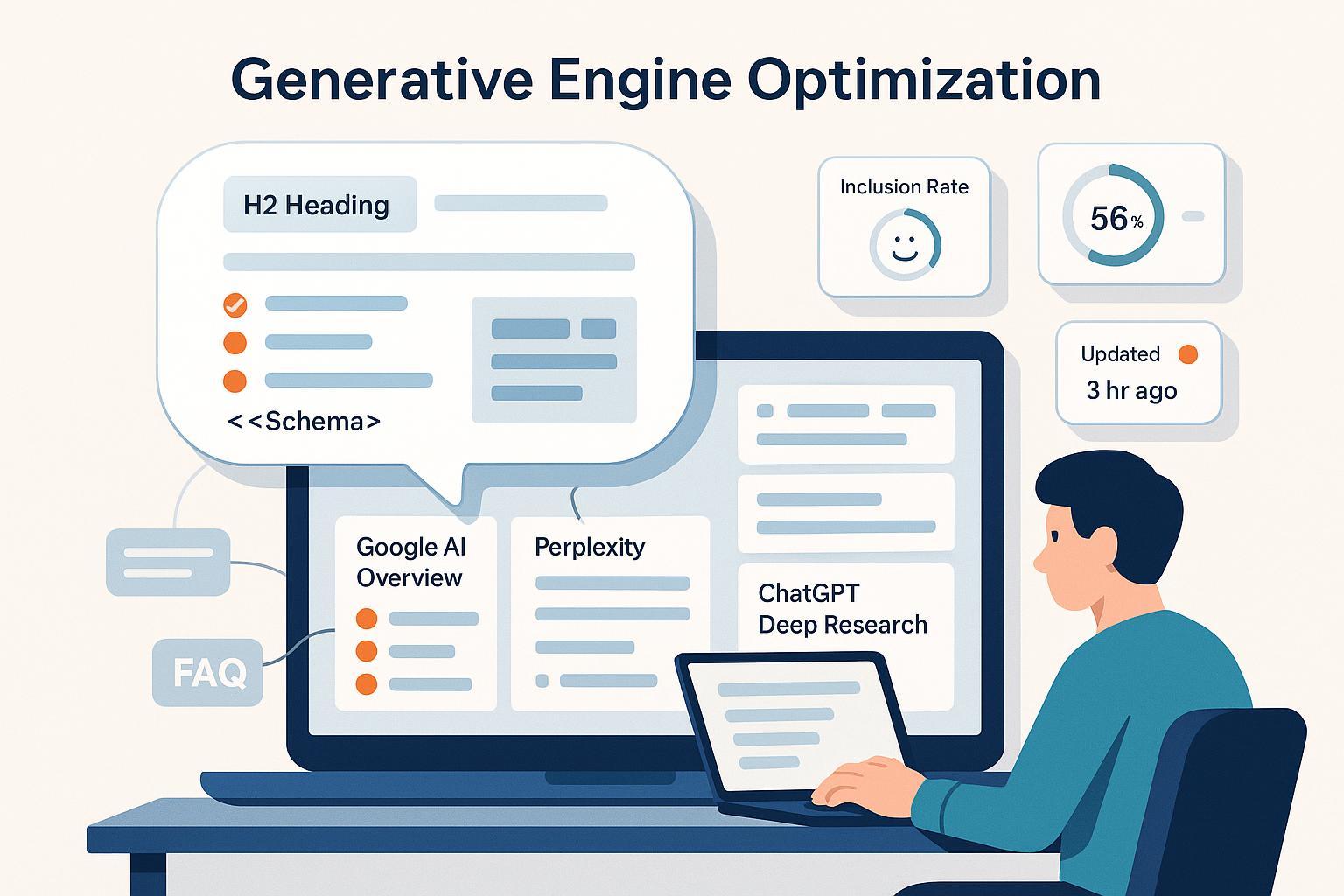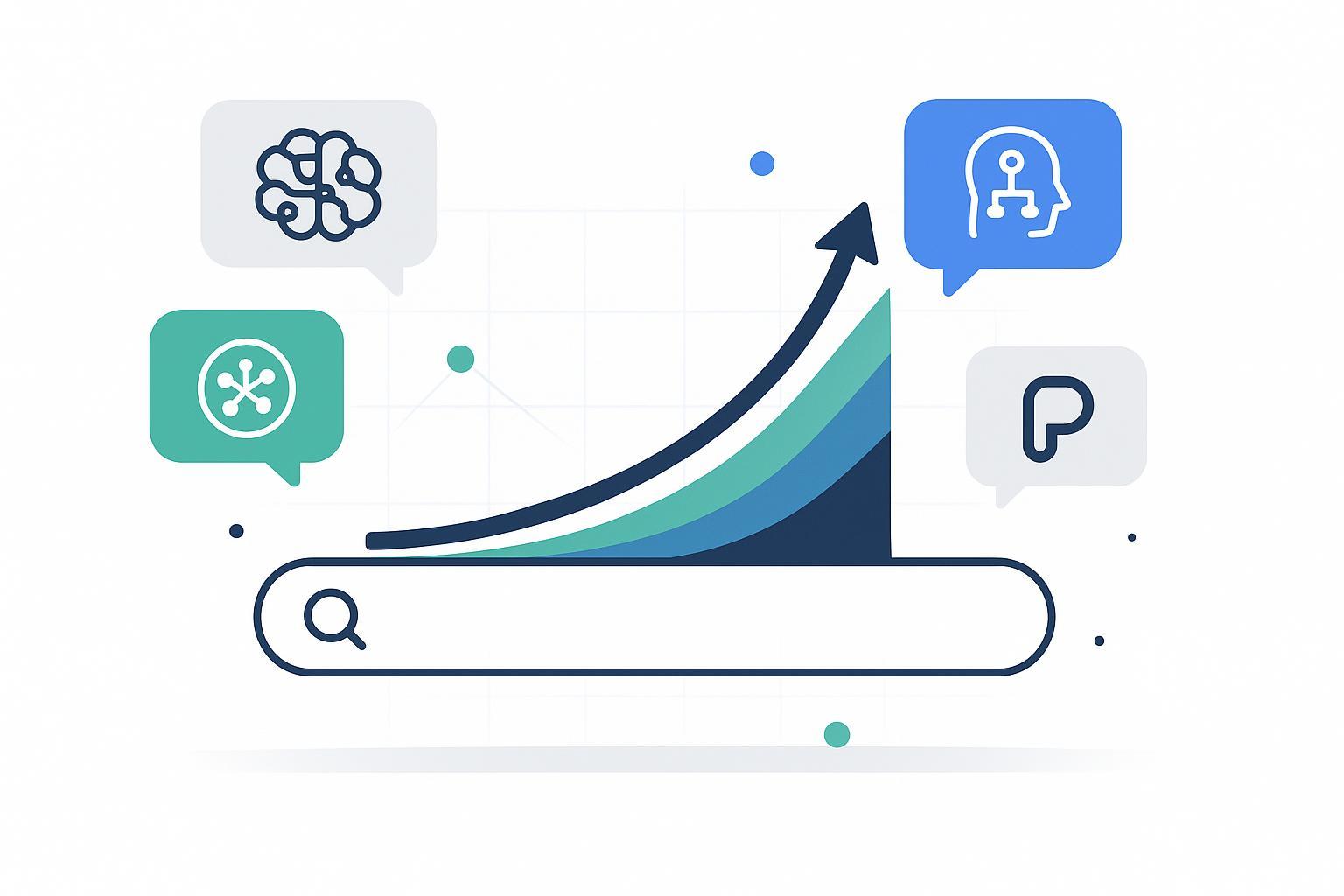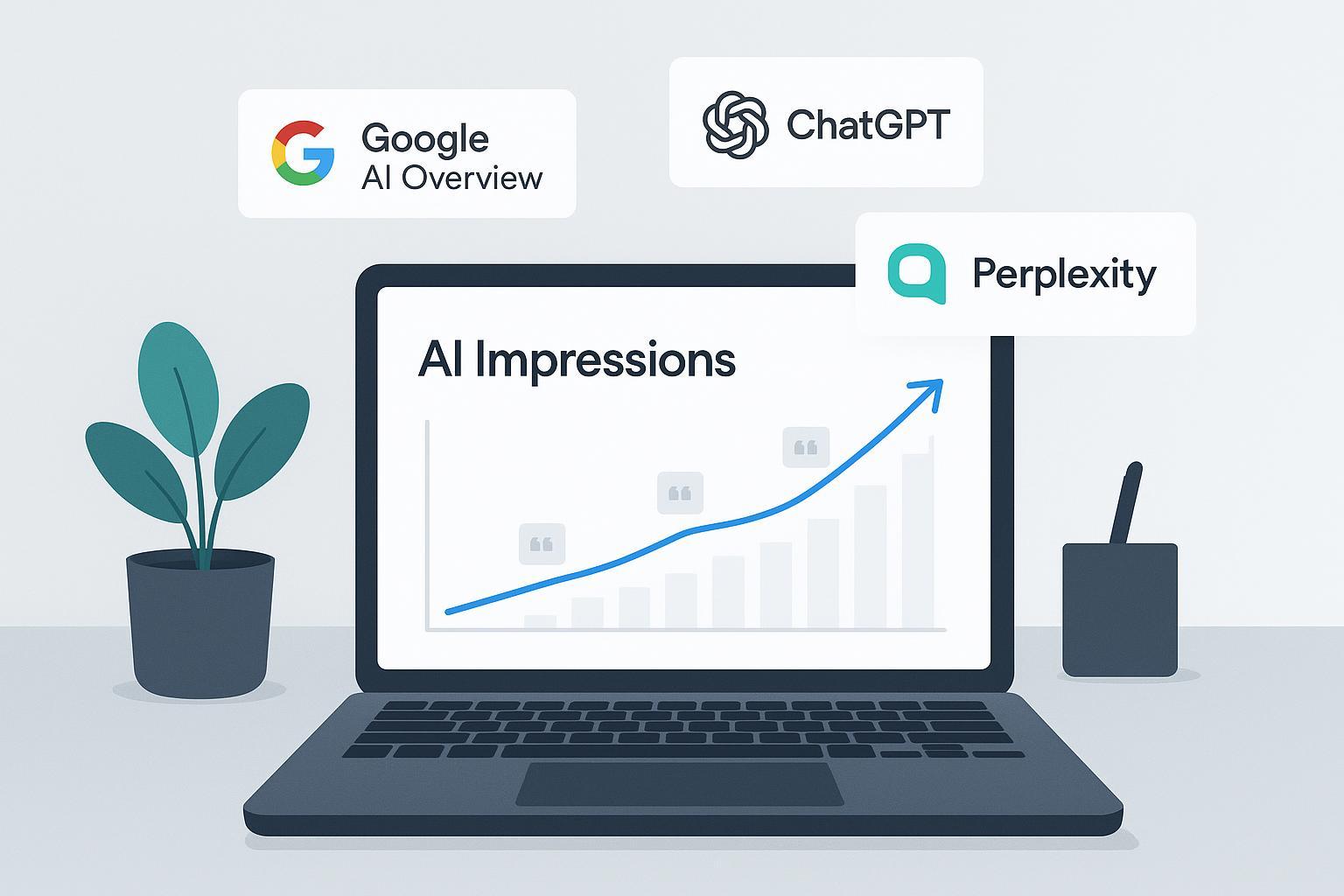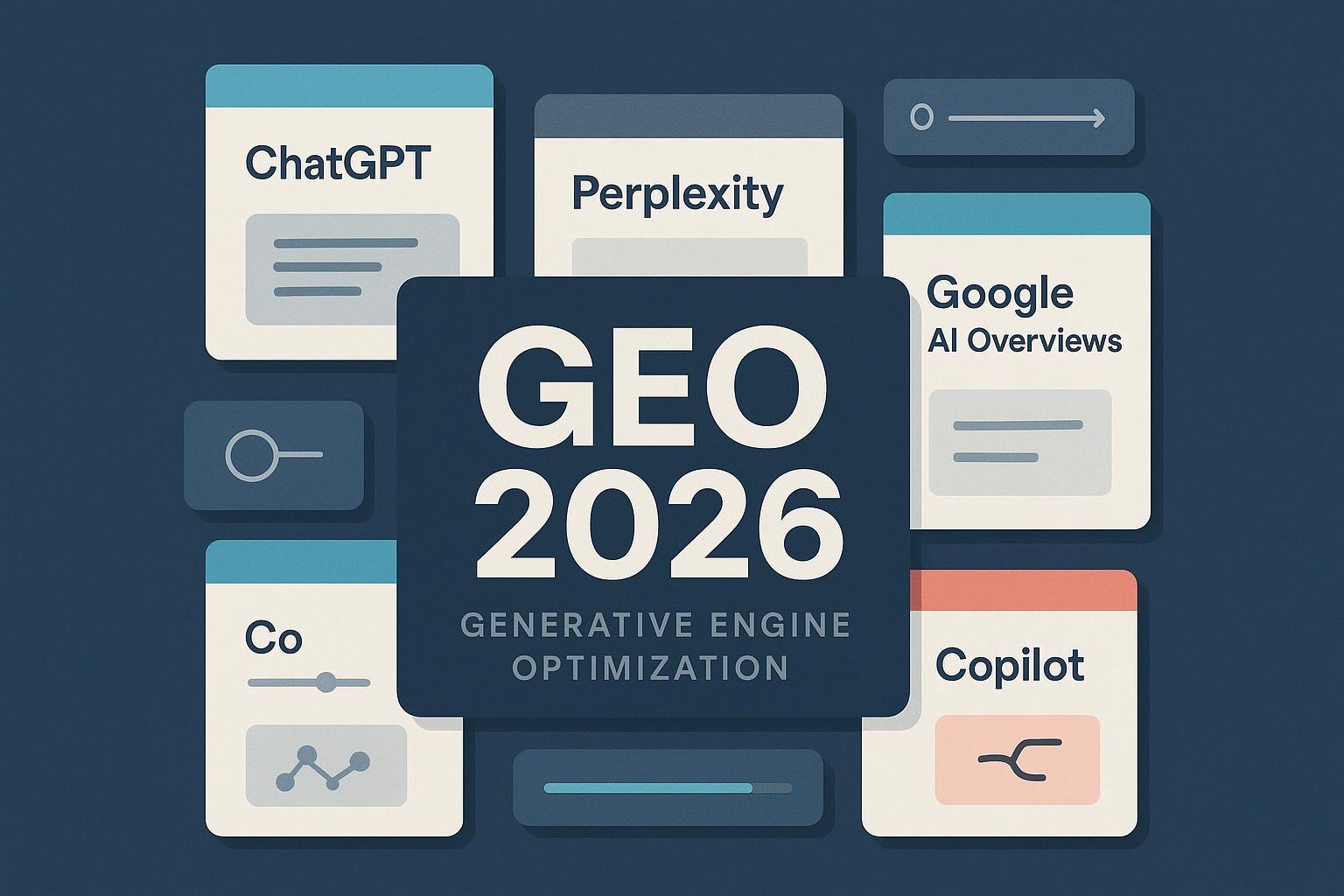Essential GEO Best Practices for Generative Search Success
Discover actionable GEO best practices to boost your content's inclusion and citation in generative search platforms like Google AI Overviews, Perplexity, and ChatGPT.


Generative Engine Optimization (GEO) is how you earn inclusion and citations inside AI answers—Google’s AI Overviews/AI Mode, Perplexity, and ChatGPT Search/Deep Research. It matters because attention is shifting from classic blue links to AI summaries: in 2025, Pew found users clicked a traditional result in only 8% of searches when an AI summary appeared vs 15% without it, a near 50% drop in CTR, according to the Pew Research Center 2025 click study. This guide focuses on what actually works in production.
GEO in one page: what changes from SEO
- Purpose: SEO targets ranking pages in SERPs; GEO targets being cited inside AI-generated answers. You still need sound SEO, but GEO emphasizes answer-first structure, recency, entity clarity, and citations the models can parse.
- Google’s stance: There are no “special” requirements to appear in AI features—ship helpful, original content and ensure access/structured data, per Google Search Central’s AI features guidance (2025). In practice, creators succeed by pairing this baseline with empirically effective content structuring and authority-building.
- Where the bar moved in 2025: AI features favor deep, well-structured subpages and current information. Search Engine Land reported that 82% of AI Overviews citations are deep pages (2025), reinforcing the shift from generic hubs to specialized pages.
Platform playbooks (foundational → advanced)
1) Google AI Overviews and AI Mode
Foundational
- Build deep pages for specific intents (e.g., “breach notification timeline checklist” vs “data breach guide”).
- Lead with a 50–80 word answer summary with a timestamp (“Updated: 2025-10-12”).
- Use supported structured data (Article/FAQ/HowTo). Validate that schema mirrors visible content using Google’s tools.
- Keep crawlability clean: HTML-first for core content, minimal reliance on JS for rendering key text.
Advanced
- Entity scaffolding: Create hub-and-spoke clusters that define and reinforce entities (people, products, standards). Link between spokes contextually.
- Q&A enrichment: Add 3–6 FAQ items phrased as natural questions the AI might lift verbatim.
- Volatility management: Expect fluctuations between AI Overviews and AI Mode; monitor changes and update your deep pages accordingly.
What I’ve seen work: Short, authoritative “answer blocks,” followed immediately by a citation or table, get lifted more often than long narrative paragraphs.
2) Perplexity
Foundational
- Clarity first: Use descriptive H2/H3s and scannable bullets. Perplexity surfaces inline citations and favors well-structured, evidence-backed answers.
- Recency signal: Update facts and include dates for data points and definitions.
- Grounding: Add outbound citations to authoritative sources to help the model verify claims.
Advanced
- Entity alignment: Use consistent names for tools, frameworks, and metrics. Include synonyms users actually search.
- Comparative modules: Perplexity often answers with pros/cons and comparisons. Pre-build a compact comparison table with sources.
- Prompt-informed tuning: Run your target questions in Perplexity monthly; adjust headings and answer blocks to the formats it returns (list, steps, table).
What I’ve seen work: Including 2–3 authoritative outbound links near claims increases the chance of being referenced in Perplexity responses, aligning with observed best practices discussed in Search Engine Land’s 2025 analysis of how Perplexity ranks content and Perplexity’s own Deep Research introduction (2025).
3) ChatGPT Search and Deep Research
Foundational
- Self-contained evidence: Provide short, citable facts with provenance (source + year) inline.
- Modular structure: Use numbered steps and explicit sub-questions; ChatGPT’s browsing agent plans tasks and benefits from structured chunks.
Advanced
- Anticipate autonomous planning: Include a “Method” section that outlines how to verify your page’s claims (data sources, formulas), which the agent can follow.
- Redundancy for attribution: Repeat key facts succinctly in captions or callouts so the agent has multiple places to latch onto the citation.
Note: Browsing/citation behavior continues to improve but isn’t flawless; OpenAI’s Deep Research overview (2025) and the FAQ (2025) clarify capabilities and limits—verify important mentions and correct inaccuracies fast.
Structure pages for AI extraction (repeatable outline)
Use this outline for most GEO-target pages:
- Answer-first summary (50–80 words) with Updated date
- Key takeaways in bullets (3–5; optional on short pages)
- Expanders: H2 blocks that map to common sub-intents
- Evidence modules: tables, short quotes with source and year
- FAQ block: 3–6 concise Q&As in natural language
- References: 2–4 authoritative outbound links that you actually used
Reusable FAQ pattern:
- Q: What is [term] in 2025?
- A: One-sentence definition, then a clarifier. Cite 1 primary source by name and year.
- Q: What’s the recommended cadence to update this page?
- A: State a timeframe (e.g., quarterly) and triggers (standard updates, regulatory changes).
- Q: What metrics prove success?
- A: List inclusion rate, citation frequency, sentiment, CTR deltas.
Why this works: AI engines chunk content along headings and bullets. Studies and field data show recent, structured, and well-cited deep pages are disproportionately cited, including Search Engine Land’s deep-page finding (2025) and Seer’s observations on recency and structure in 2024–2025.
Authority and citation-building that models trust
- Co-citations: Earn mentions from expert hubs and standards bodies; unlinked brand mentions still help models associate entities.
- Outbound corroboration: Link to the primary data or documentation you rely on. In Seer’s 2024 benchmark, pages that embedded credible citations saw sizable visibility gains in generative engines; see Seer’s summary in their optimizing content for generative search engines study (2024).
- Evidence embeds: Provide small, copyable fact blocks and labeled charts with source + year.
- Depth over breadth: One authoritative deep page beats five thin listicles for GEO.
Technical hygiene you shouldn’t skip
- Crawlability: Don’t block AI-relevant resources; avoid shipping critical copy solely via JS. Keep pages fast and HTML-first.
- Structured data: Use supported types and keep them in sync with visible content; validate regularly via Google’s tools as policies change. Start from the structured data intro by Google (2025).
- Internal linking: Build topic clusters to reinforce entity expertise.
- Change logs: Maintain a visible “Last updated” and document what changed; models overweight recency.
- Monitoring volatility: AI features evolve quickly; Similarweb reported rising AI referrals but overall zero-click growth after AI Overviews’ rollout—see their GenAI Intelligence Toolkit press release (2025) for macro context.
Measurement and ongoing optimization (KPIs and workflow)
Track these KPIs monthly:
- Inclusion rate: % of priority queries where your content is cited (by platform)
- Citation frequency: Count of brand/URL mentions in AI answers
- Sentiment and accuracy: How the AI describes your brand and whether it’s correct
- Freshness velocity: Time from page update to first/next AI citation
- CTR deltas: Compare organic CTR when AI Overviews are present vs not; Seer’s 2024 study showed CTR can be partially mitigated when cited inside an Overview
Micro-workflow example (uses product; disclosure below):
- First, add your keyword list and target entities to Geneo. Set alerts for new citations across ChatGPT, Perplexity, and Google AI Overviews. Review each citation’s snippet to identify which on-page block was quoted; tighten that block for clarity, add a corroborating authoritative source, and timestamp the update. Use the platform’s sentiment view to flag mischaracterizations and prioritize fixes.
Disclosure: We build Geneo. The mention above is provided to illustrate one practical GEO tracking workflow.
For additional context and outcomes by industry, see cross-vertical patterns in the 2025 AI search strategy case studies. As Google iterates AI features, stay aligned with core updates in the October 2025 algorithm update analysis.
Manual fallback (if you don’t use a tool):
- Create a tracking sheet with priority queries, platforms, current inclusion status, citation snippet, sentiment, last page update date, and next action.
- Re-test top queries monthly in Perplexity, ChatGPT, and Google; log changes and tie them to specific edits.
Advanced frontier: agentic search and MCP readiness
Agentic search means AI agents plan, browse, and act. Content that’s structured, verifiable, and task-oriented performs better when agents synthesize answers. For background, see the Razorfish perspective on how agentic AI is reshaping search (2025).
If you provide data or tools, consider exposing machine-friendly endpoints and clear documentation. The emerging Model Context Protocol standardizes how LLM apps connect to external tools and data; review the MCP specification (2025) to plan future integrations.
Common pitfalls and trade-offs
- Chasing volume over depth: Thin pages rarely get cited; deep, specific pages win.
- Over-automation: AI-written pages without expert review often introduce errors that AIs won’t cite.
- Ignoring corroboration: Claims without primary sources are less likely to be trusted or referenced.
- Letting pages go stale: Recency matters; stale facts erode trust signals.
- Misreading volatility: Expect fluctuations in inclusion; respond with targeted updates, not wholesale rewrites.
A 30–60–90 day GEO action plan
Days 0–30 (Foundation)
- Pick 15–30 priority questions per product/service line.
- For each, publish or refactor one deep page using the outline above, with an answer-first summary and FAQ.
- Add 2–4 authoritative outbound citations with year labels; validate schema.
- Establish measurement: inclusion rate, citation frequency, sentiment, freshness velocity.
Days 31–60 (Iteration)
- Run monthly tests in Perplexity, ChatGPT, and Google; compare answer formats and fill gaps.
- Expand entity clusters: add 2–3 spokes per hub; create comparison tables.
- Tighten evidence: add charts/snippets with sources; update timestamps and change logs.
Days 61–90 (Scale and resilience)
- Systematize updates: set quarterly review cadences for high-value pages.
- Build co-citations: pitch expert hubs or standards bodies with your primary research or guides.
- Prepare for agentic workflows: document methods and, if applicable, plan machine-readable endpoints.
Final notes on expectations
There’s no silver bullet. Google reiterates there’s no special tag to “force” inclusion in AI features, per their AI features guidance (2025). Success comes from pairing that baseline with answer-first structure, deep topical pages, credible citations, and disciplined tracking. Consistency beats one-off hacks in GEO.





